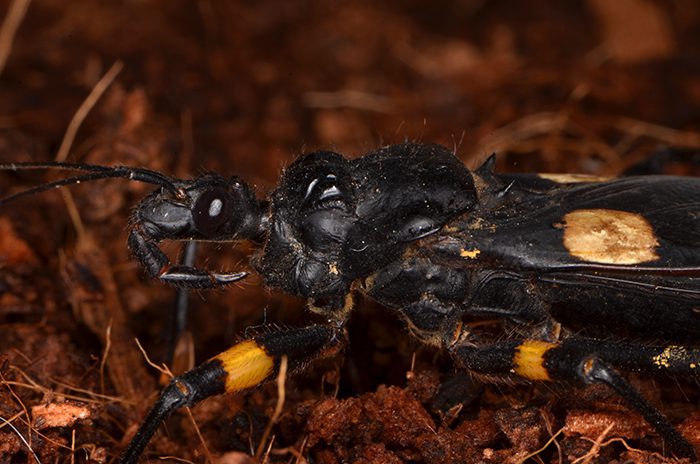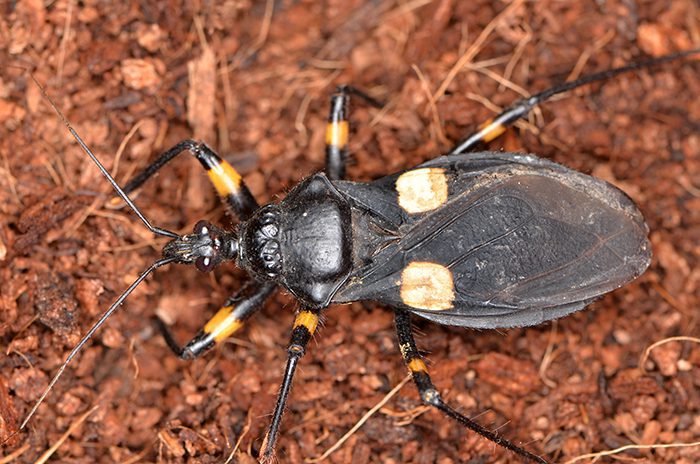Platymeris biguttata
White Spot Assasin Bug (x3)
Species Info:
Origin
Lifestyle
Temp
Humidity
Leg Span
Disposition
Suitability
Caution
The venom from the assassin bug’s mouth can be sprayed with scary accuracy and seems to aim for the eyes. Do not handle and always keep them at least an arms length away when not in their enclosure. Their bite is worse than the venom sprayed and the wound can last for weeks. They are also quite speedy.
Enclosure
You can keep them in any well-ventilated enclosure of reasonable size – for example a cricket tub with slightly larger holes is fine or a faunarium. If you use the latter be aware their venom could be sprayed through the gaps. Not sure if they would. Have a damp bottom substrate of coco-husk or soil with a dry substrate on top, such as lots of bark for hiding. Also you can put single egg cartons for hiding. Water can be provided by placing a cotton wool soaked in water. They will usually get their liquid from their food though.
Heating
Temperature needs to be kept warm at around 80-85 Fahrenheit. They like to burrow sometimes, so the heat mat must go on the side of the tank – they’re somewhat the same as scorpions and horned frogs in their behaviour, burrowing mainly to get away from the heat. Some owners prefer to use heat bulbs.
Feeding
They eat any invertebrate, with a varied diet best to maintain good health. Food should be the same size as the assassin bug itself, but it will take down injured crickets twice its size. They attack by sneaking up on the prey and then quickly jumping on them. The assassin bug stabs the prey with its proboscis and injects venom, quickly killing it. After dragging the dead victim away, it will feed by sucking the juices out. It will sometimes feed in the open.
Behaviour
Nocturnal but will come out during the day. They occasionally burrow to get away from the heat. A newly shed assassin bug will be bright orange and this colouration lasts for a couple of hours. The assassin bug is a very inquisitive insect and it will appreciate different things to climb on and hide under.
Breeding
The female assassin bug is parthenogenic so males are not needed, but obviously genetic variety is best. Eggs are laid in the substrate, providing it is moist.

